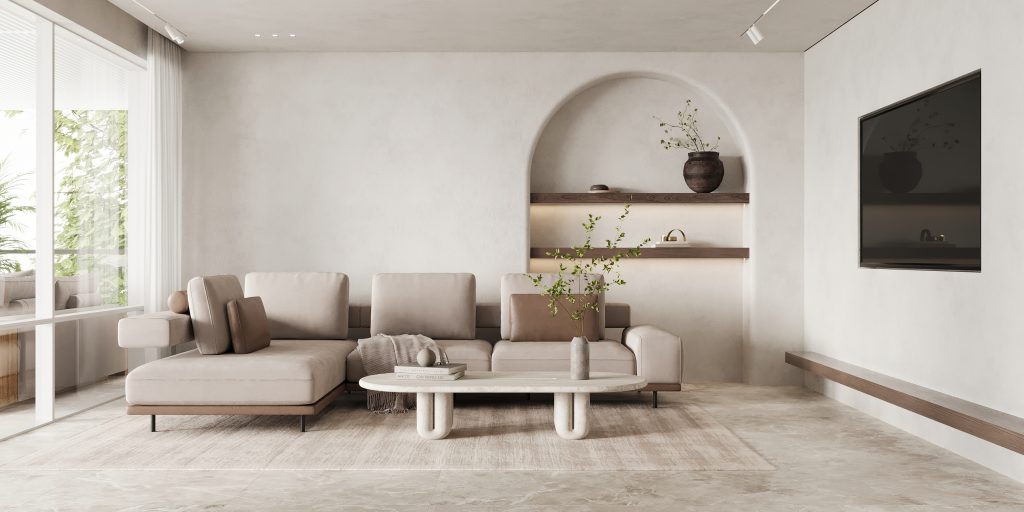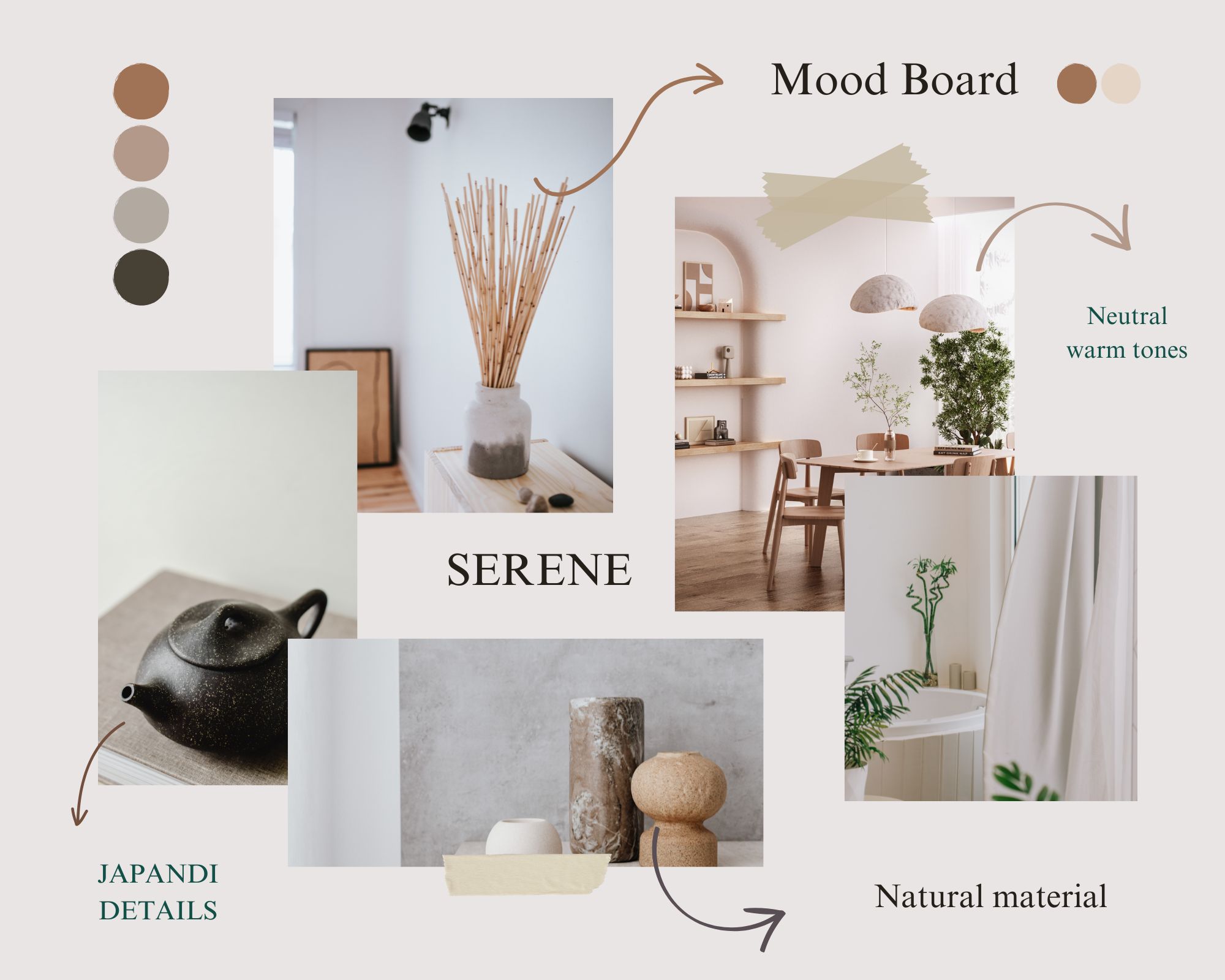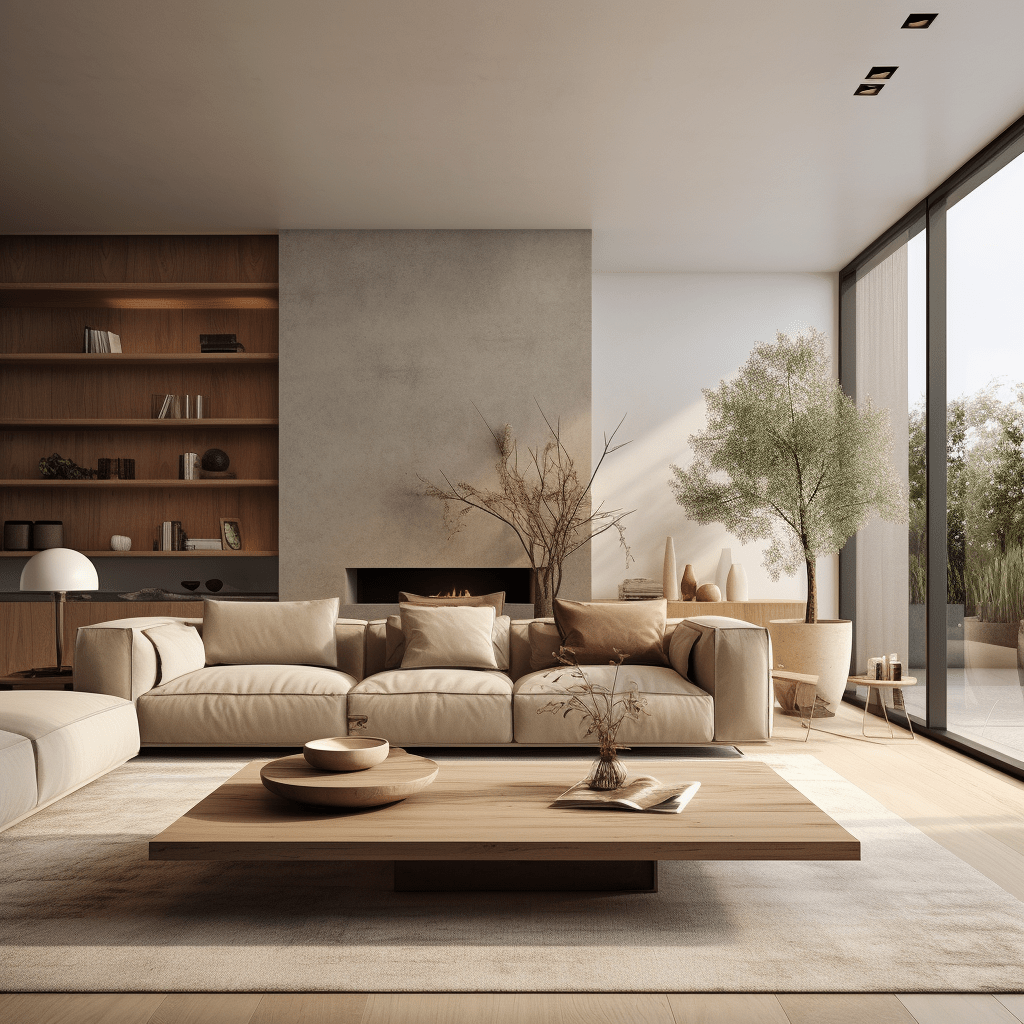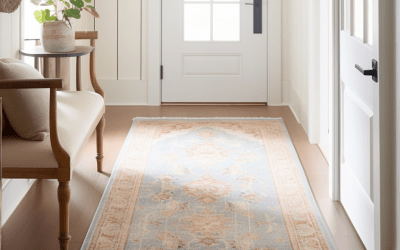Have you ever heard of Japandi and Wabi-Sabi? Perhaps these terms have crossed your path, leaving you intrigued but uncertain about their true meaning.
Japandi style has emerged as a timeless fusion of Japanese minimalism and Scandinavian functionality, while Wabi-Sabi celebrates imperfection, simplicity, and the beauty of natural aging.
In this post, we will dive into the serene and harmonious world of Japandi style, as we explore its unique elements and the timeless elegance of Wabi-Sabi. You will learn how these design philosophies can transform your house into zen and functional home on a budget.
Disclaimer : this post contains affiliate links and any purchases made through such links will result in a small commission for me (at no extra cost for you).

Related topics : How to make your home look luxurious
1. Understanding Japandi Style and Wabi-Sabi
Japandi style draws inspiration from the simplicity of Japanese design and the functionality of Scandinavian interiors. It embraces :
– Clean lines
– Neutral colors;
– And a sense of minimalism.
On the other hand, Wabi-Sabi, a Japanese philosophy, celebrates :
– Imperfection,
– Simplicity;
– And the natural aging process.
As we embark on this exploration, understanding the differences between these two philosophies becomes paramount.
2. Mastering Japandi Style
Japandi Furniture
When it come to Japandi furniture, simplicity and functionality take center stage.
Consider low-profile sofas with clean lines and muted colors.
In the bedroom, opt for a Japandi plateform bed made of solid wood to anchor the space and provide tranquility.
For the dining area, choose tables and chairs featuring elegant designs in wood or leather.
Will dive into more furniture details later.
Japandi Material Choices
- Sofa: Low-profile design, clean lines, muted colors, natural materials like leather or linen.
- Bedroom: Platform bed, solid wood, muted and calming colors, natural materials like linen and wood.
- Dining Area: Elegant designs in wood or leather for tables and chairs, emphasizing simplicity and craftsmanship.

Credit : Alona Gross on Unsplash
Japandi Layout : HOW TO ACHIEVE THE BEST RESULT
Minimalist Lighting Fixtures
Incorporate minimalist lighting fixtures, such as pendant lights or floor lamps, with clean designs. Opt for fixtures that provide both functionality and aesthetic appeal without overwhelming the space.
Decorate with Natural Materials
Adorn the space with natural materials like stone, wood, and ceramics. Choose furniture and decor items that embody the essence of Japandi style, fostering a connection with nature indoors.
Introduce Greenery Strategically
In the minimalist aspect of Japandi design, greenery plays a crucial role. Introduce low-maintenance plants strategically to maintain a clutter-free environment. Consider bonsai trees, bamboo, or other plants that align with the overall aesthetic.
3. HOW TO MASTER JAPANDI : ROOM BY ROOM
– Japandi Living Room
You can easily transform your living room with a neutral color palette of soft grays, muted blues, and warm earthy tones.
Invest in a low-profile sofa with clean lines, a unique side table, complemented by oversized cushions for a perfect balance of comfort and style.
Introduce minimalist lighting fixtures and potted plants for a serene and inviting space.
– Japandi Kitchen
Infusing serenity into your kitchen is key to achieve the Japandi look, with light-colored cabinets, clean lines, and wooden countertops.
Embrace open shelving for minimalist tableware and add touches of greenery with potted plants or herbs.
Don’t miss out on unique plates and bowls, they make a huge difference.
– Japandi Bedroom
Create a serene and intimate bedroom with a low-profile bed featuring a simple and elegant design.
Keep the color palette muted and calming, focusing on natural materials like linen and wood.
Incorporate wabi-sabi elements such as handmade pottery or a vintage rug to add character.
– Japandi Office
Incorporate Japandi style into your home office with functional and minimalist furniture.
Choose a desk with clean lines, ergonomic chairs, and strategic lighting for a focused and tranquil workspace.

- JAPANDI WALL ART
To infuse a touch of uniqueness and imperfection into your Japandi-styled home, consider wabi-sabi wall art.
Handcrafted artwork, distressed frames, or pieces showcasing the passage of time can add depth and authenticity to your living spaces.
4. Embracing Wabi-Sabi Elegance
Wabi-Sabi Furniture Choices
Embrace Wabi-Sabi elegance in furniture choices by selecting pieces that celebrate imperfection. Choose worn textures, handmade accents, and vintage elements that tell a story.
Wabi-Sabi Layout
Create an environment that appreciates the beauty of imperfection in layout choices. Allow for asymmetry, incorporate handmade elements, and cherish the uniqueness of each piece.
5. HOW TO MaSter Wabi-Sabi : Room by Room
– Wabi-Sabi Living Room
Select furniture that embodies the Wabi-Sabi spirit, such as distressed wooden frames, handcrafted textiles, or aged leather. Arrange furniture asymmetrically to create a sense of uniqueness and individuality.
– Wabi-Sabi Kitchen
Incorporate Wabi-Sabi elegance into your kitchen with worn textures on cabinets, vintage kitchenware, and imperfectly shaped ceramics. Celebrate the history of each element for a kitchen that tells a story.
– Wabi-Sabi Bedroom
Create a tranquil bedroom with furniture that showcases the beauty of imperfection. Choose distressed finishes, vintage accents, and embrace asymmetry for a space that feels genuine and inviting.
– Wabi-Sabi Office
Transform your home office into a space that celebrates the passage of time. Choose furniture with worn textures, aged leather chairs, and incorporate elements that tell a story.
– Wabi-Sabi Wall Art
Incorporate Wabi-Sabi elegance into your living spaces with carefully chosen wall art. Opt for weathered frames, handcrafted pottery, or artwork that showcases the beauty of decay. These elements add authenticity and depth to the minimalist backdrop of Japandi style.

In the pursuit of a zen house that exudes sophistication and timeless beauty, the marriage of Japandi style and Wabi-Sabi elegance offers a perfect balance.
By understanding the nuances of each philosophy and strategically incorporating their elements, you can create living spaces that not only showcase aesthetic appeal but also embody the serenity and authenticity derived from the rich traditions of Japanese and Scandinavian design.
Let the principles of Japandi and the elegance of Wabi-Sabi guide you towards a home that reflects your unique style and appreciation for beauty in simplicity.




I learned so much from this post! It got me inspired to upgrade my home office 😍
Really interesting, and gorgeous pictures!! Japandi is such a lovely style!
Thank you for taking the time to read the article 🙂
Great information. Thanks for sharing
Thank you for reading 🙂
Oh my goodness, these photos look like such calming environments. I tend to stay away from white pieces of furniture, being afraid of staining but do love the neutral tones to add color to with accessories.